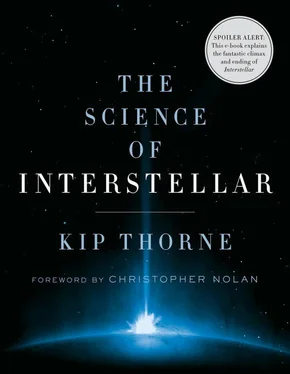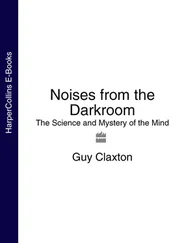This mixing of space and time may seem counterintuitive, but it is fundamental to the very fabric of our universe. Fortunately, we can pretty much ignore it in this book except for Chapter 30.
The Bulk: Is It Real?

Throughout this book, I visualize warped space by picturing our universe as a two-dimensional warped membrane, or brane, that resides in a bulk with three space dimensions—as in Figure 21.1, for example. Of course, in reality our brane has three space dimensions and the bulk has four, but I’m not very good at drawing that, so in my pictures I usually throw one dimension away.
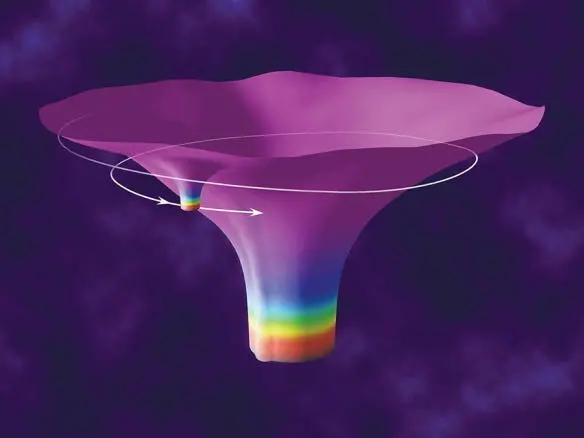
Fig. 21.1. A small black hole spiraling into a large black hole, as viewed from the bulk with one space dimension removed. [Drawing by Don Davis based on a sketch by me.]
Does the bulk really and truly exist, or is it just a figment of our imaginations? Until the 1980s, most physicists, including me, thought it a figment.
How could it be a figment? Don’t we know for sure that our universe’s space is warped? Don’t the radio signals sent to the Viking spacecraft reveal its warpage to high precision (Chapter 4)? Yes …. And since our space is truly warped, doesn’t it have to be warped inside some higher-dimensional space, inside some bulk?
No. It is perfectly possible for our universe to be warped without there really existing a higher-dimensional bulk. We physicists can describe our universe’s warping, in mathematics, without the aid of a bulk. We can formulate Einstein’s relativistic laws, which govern the warping, without the aid of a bulk. In fact, that’s how we almost always do it, in our research. The bulk, for us, until the 1980s, was just a visual aid. An aid to give us intuition about what’s going on in our mathematics, and to help us communicate with each other and with nonphysicists. A visual aid. Not a real thing.
What would it mean for the bulk to be real? How can we test whether it’s real? The bulk is real if it can influence things we measure. And until the 1980s we saw no way it could influence our measurements.
Then in 1984 this changed. Radically. Michael Green at the University of London and John Schwarz at Caltech had a huge breakthrough in the quest to discover the laws of quantum gravity. [35] See Chapter 3 for a brief description of this quest.
But strangely, their breakthrough worked only if our universe is a brane embedded in a bulk that has one time dimension and nine space dimensions—a bulk with six more space dimensions than our brane. In the mathematical formalism that Green and Schwarz were pursuing, called “superstring theory,” the bulk’s extra dimensions influence our brane in major ways, in ways that can be measured in physics experiments when we have sufficiently advanced technology. In ways that may make it possible to reconcile the laws of quantum physics with Einstein’s relativistic laws.

Fig 21.2. Left : Michael Green ( left ) and John Schwarz hiking in Aspen, Colorado, in 1984, at the time of their breakthrough. Right : Michael Green ( left ) and John Schwarz ( right ) being awarded the three-million-dollar 2014 Fundamental Physics Prize for their breakthrough. In the middle are Yuri Milner (founder of the prize) and Mark Zuckerberg (Facebook cofounder).
Since the Green-Schwarz breakthrough, we physicists have taken superstring theory very seriously and have put great effort into exploring and extending it. And, consequently, we have taken very seriously the idea that the bulk truly exists and truly can influence our universe.
The Fifth Dimension

Although superstring theory says the bulk has six more dimensions than our universe, there is reason to suspect that, for practical purposes, the number of extra dimensions is really only one. (I explain this in Chapter 23.)
For this reason, and because six extra dimensions is a bit much for a science-fiction movie, Interstellar ’s bulk has just one extra dimension, for a total of five dimensions in all. It shares three space dimensions with our brane: east-west, north-south, and up-down. It shares a fourth, time dimension, with our brane. And it has a fifth space dimension, out-back , which extends perpendicular to our brane, both above the brane and below, as depicted in Figure 21.3.
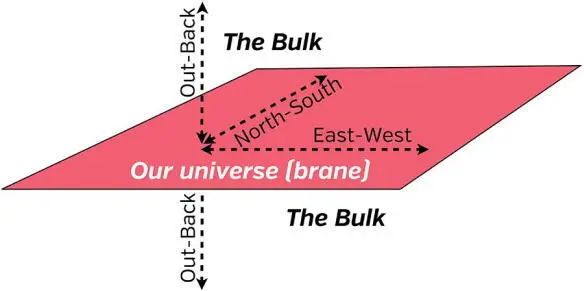
Fig. 21.3. Our universe as a brane with four spacetime dimensions, residing in a five-dimensional bulk. I have suppressed two dimensions from the diagram: time, and our universe’s up-down dimension.
The out-back dimension plays a major role in Interstellar , though the Professor and others don’t use the phrase “out-back,” but instead just refer to “the fifth dimension.” Out-back is central to the next two chapters, and to Chapters 25, 29, and 30.
2D Brane and 3D Bulk

In 1844 Edwin Abbott wrote a satirical novella titled Flatland: A Romance of Many Dimensions (Figure 22.1). [36] Widely available on the web. See, for example, the end of the article “Flatland” on Wikipedia .
Though its satire on Victorian culture seems quaint today and its attitude toward women outrageous, the novella’s venue is highly relevant to Interstellar. I recommend it to you.
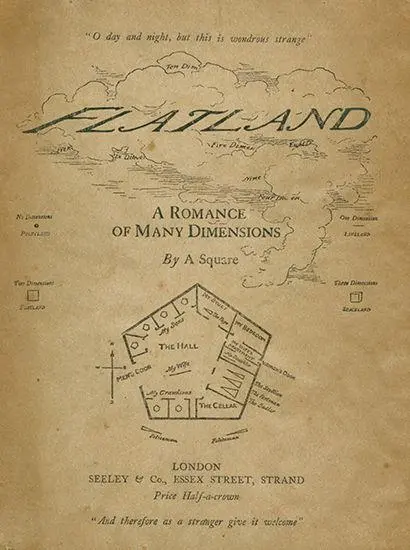
Fig. 22.1. The cover of the first edition of Flatland .
It describes the adventures of a square-shaped being who lives in a two-dimensional universe called Flatland. The square visits a one-dimensional universe called Lineland, a zero-dimensional universe called Pointland, and most amazing of all to him, a three-dimensional universe called Spaceland. And, while living in Flatland, he is visited by a spherical being from Spaceland.
In my first meeting with Christopher Nolan, we were both delighted to find the other had read Abbott’s novella and loved it.
In the spirit of Abbott’s novella, imagine that you are a two-dimensional being, like the square, who lives in a two-dimensional universe like Flatland. Your universe could be a tabletop, or a flat sheet of paper, or a rubber membrane. In the spirit of modern physics, I refer to it as a two-dimensional (2D) brane .
Being well educated, you suppose there is a 3D bulk, in which your brane is embedded, but you’re not certain. Imagine your excitement when one day you are visited by a sphere from the 3D bulk. A “bulk being,” you might call him.
At first you don’t realize it’s a bulk being, but after much observation and thought, you see no other explanation. What you observe is this: Suddenly, with no warning and no apparent source, a blue point appears in your brane (top left of Figure 22.2). It expands to become a blue circle that grows to a maximum diameter (middle left), and then gradually shrinks to a point (bottom left) and disappears completely.
Читать дальше
